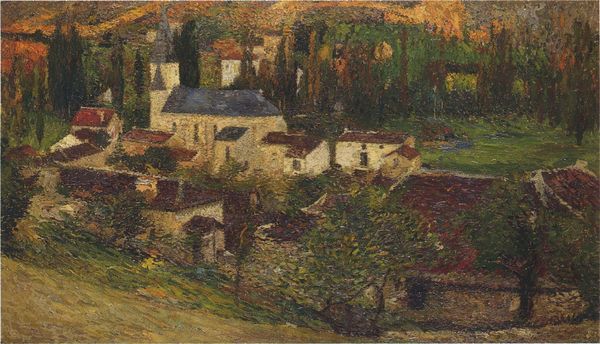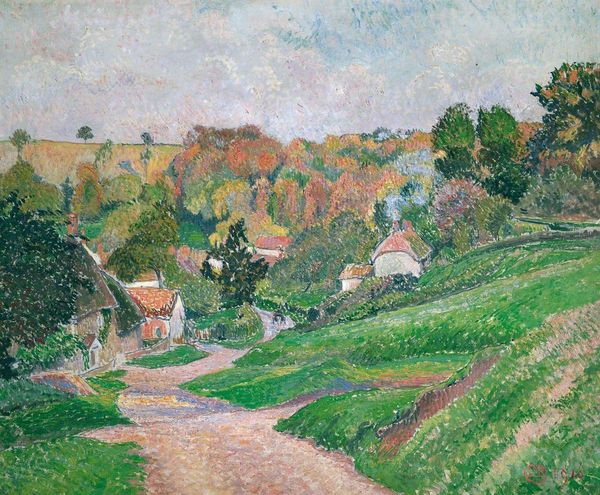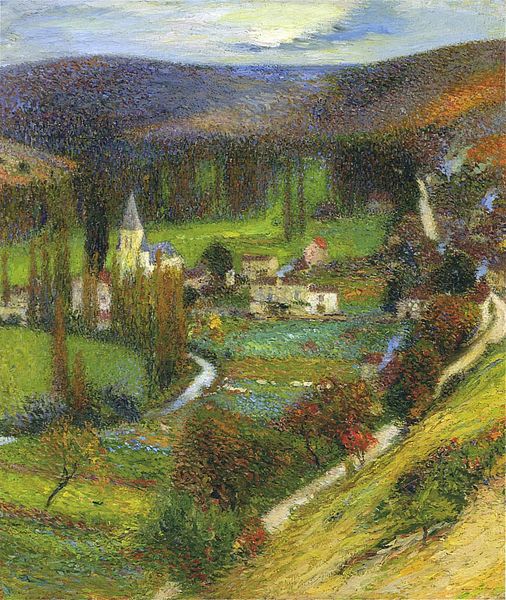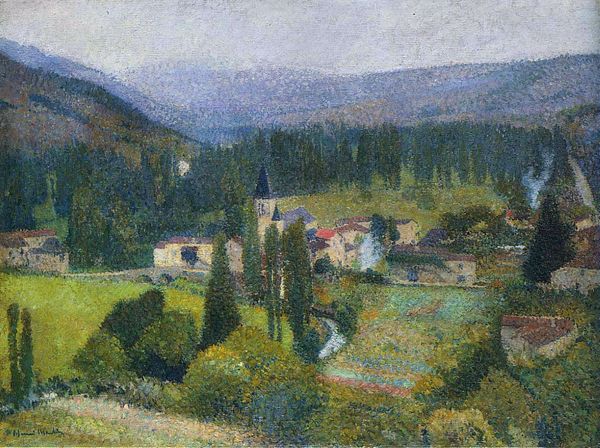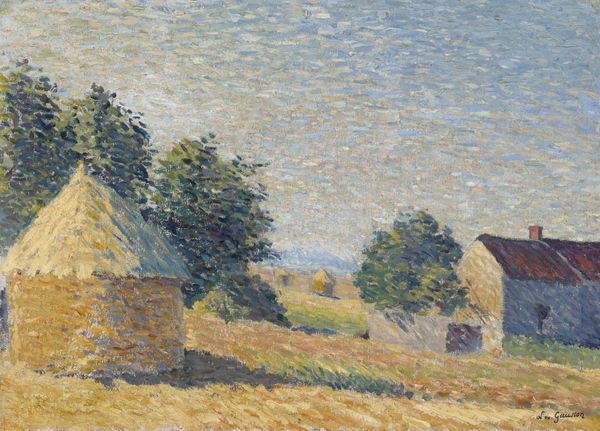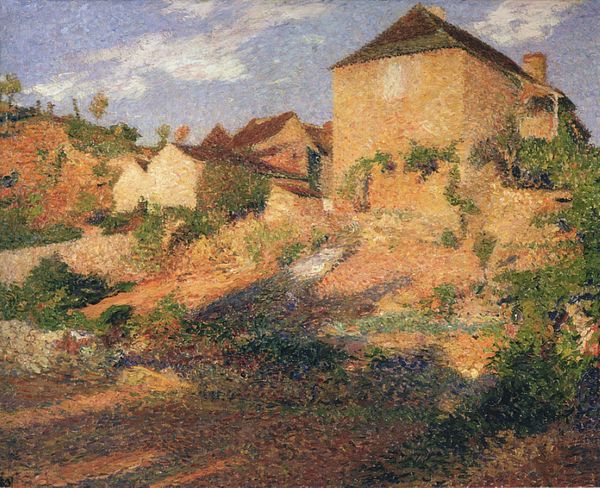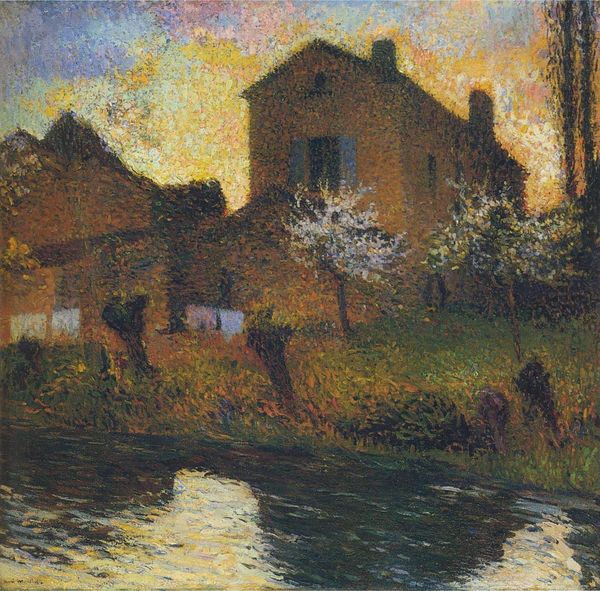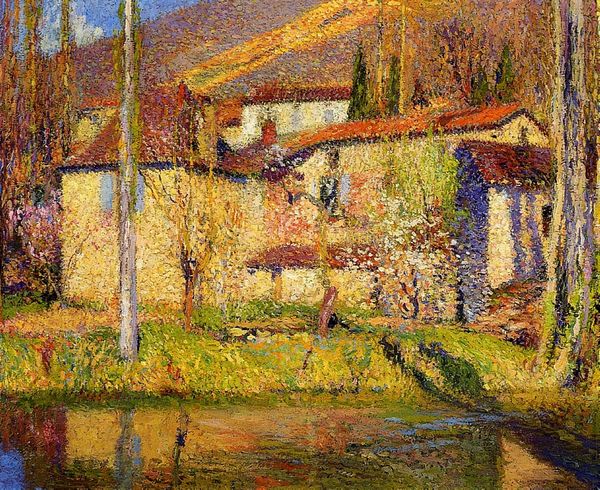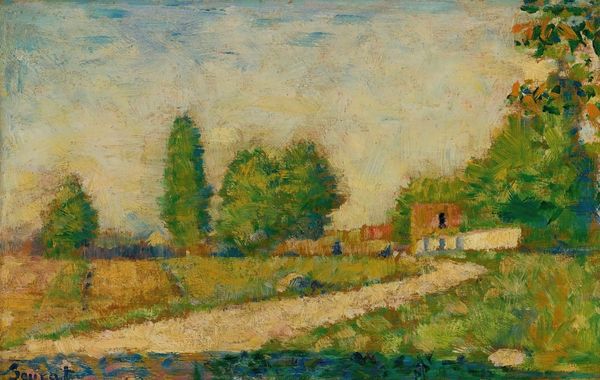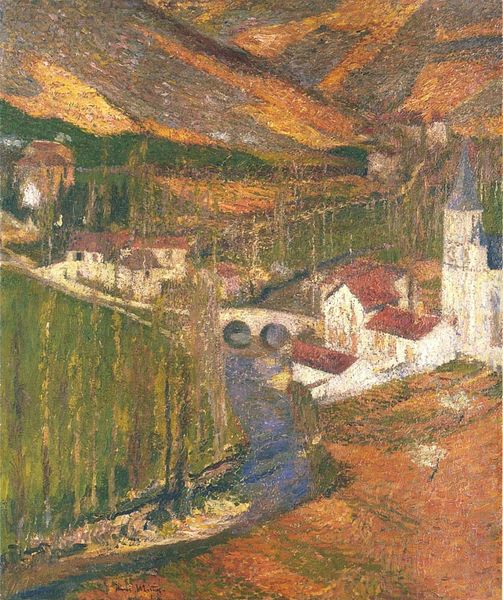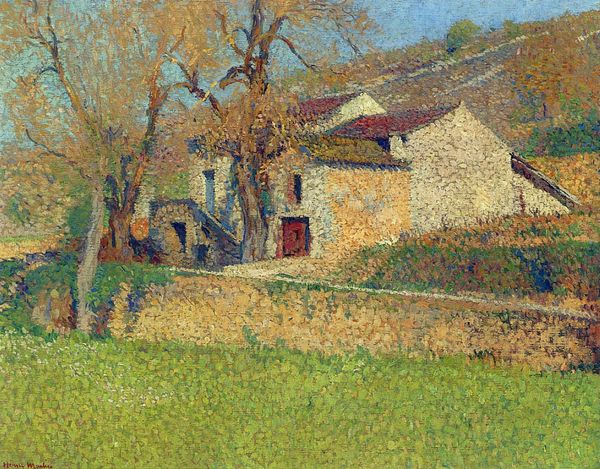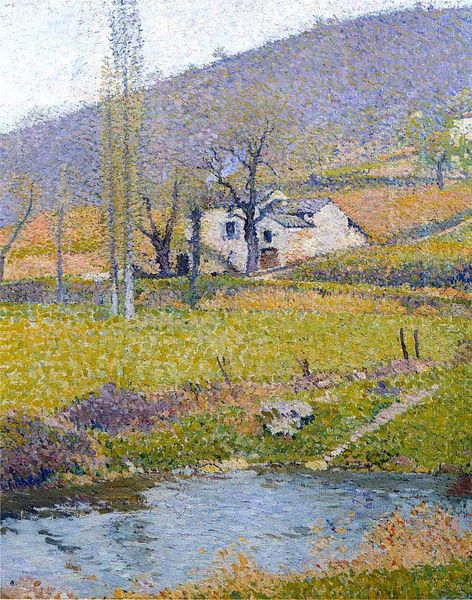
painting, oil-paint, architecture
#
tree
#
painting
#
impressionism
#
impressionist painting style
#
oil-paint
#
landscape
#
river
#
house
#
impressionist landscape
#
nature
#
oil painting
#
water
#
cityscape
#
architecture
#
building
Copyright: Public domain
Curator: "Village Labastide du Vert," a painting seemingly kissed by sunshine itself, strikes me first as something overwhelmingly peaceful. There's an airy lightness to the composition, even in its density. Editor: It's interesting that you say peaceful, as rural landscapes like these have been freighted with all sorts of ideologies over the centuries. This image—done with oil on canvas—conjures that vision of idealized peasant life that was so potent during the late 19th century, particularly in France. Curator: True, I suppose it’s easy to get caught up in the idyllic surface! Yet there’s an interesting tension here, I feel. On the one hand, the visible brushstrokes—characteristic of the Impressionist style, right?—seem to democratize the image, to refuse a sense of high artifice. But simultaneously, this image of rural harmony, well, it seems a bit too perfect. A beautiful lie? Editor: Exactly! Artists like Henri Martin were acutely aware of this tension. They knew the art market demanded these kinds of romanticized scenes. But they were also individuals with complex thoughts and political opinions regarding modern life. There's this desire for authenticity bumping against a very constructed idea of it. Curator: And the setting! The village nestling so cozily within the landscape. You almost want to jump right in, no? Although…now that I look closely… I wonder, do you get a slightly ominous feeling too? Those dark shadows lurking near the water… and what is causing all that smoke? I imagined peaceful industry, but maybe its hiding other darker realities... Editor: Shadow, smoke... Well, the darker aspects of 19th-century rural life are precisely what these painters often obscured, of course. Class divisions, land ownership, industrial encroachment, sanitation, things the bourgeoisie who bought these paintings would rather ignore. Martin invites you in but offers a sanitized vision. Curator: Maybe that sanitized vision holds a truth, even so? We grasp after beauty. What it really means is hard to tell. Editor: An art historian's dilemma in a nutshell! In the end, we are always trying to figure that meaning out in an endless game of intellectual Whac-A-Mole.
Comments
No comments
Be the first to comment and join the conversation on the ultimate creative platform.
